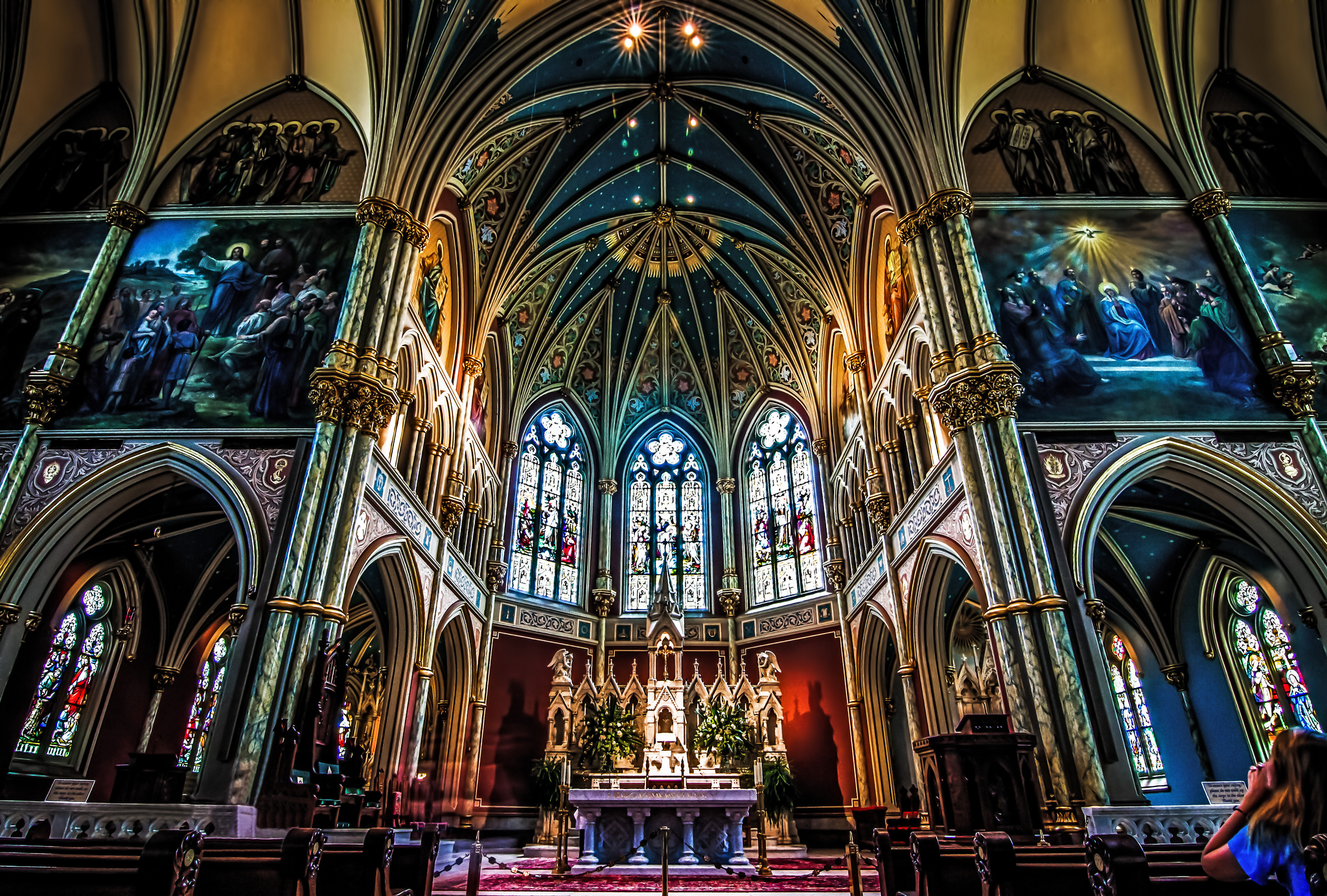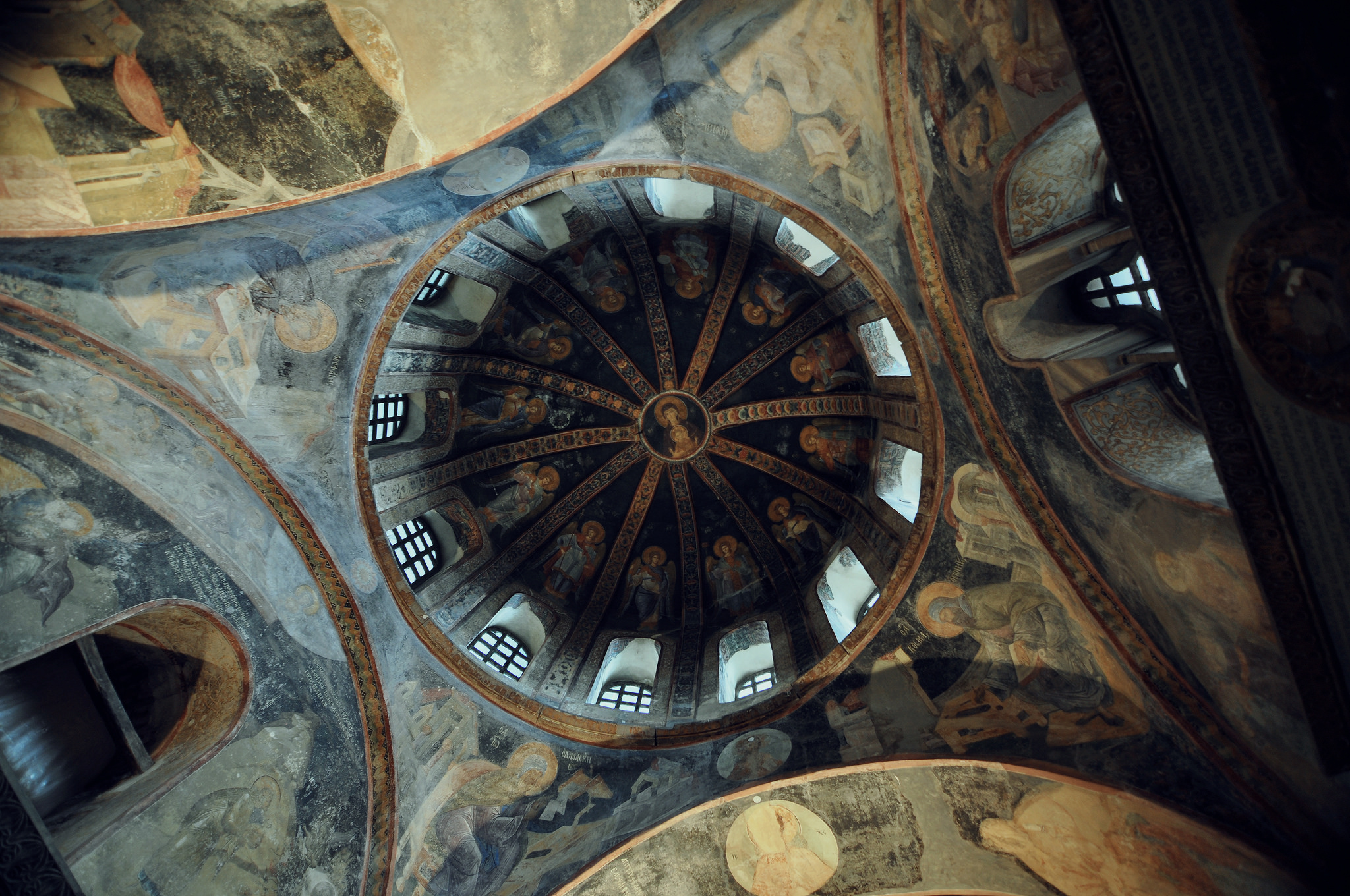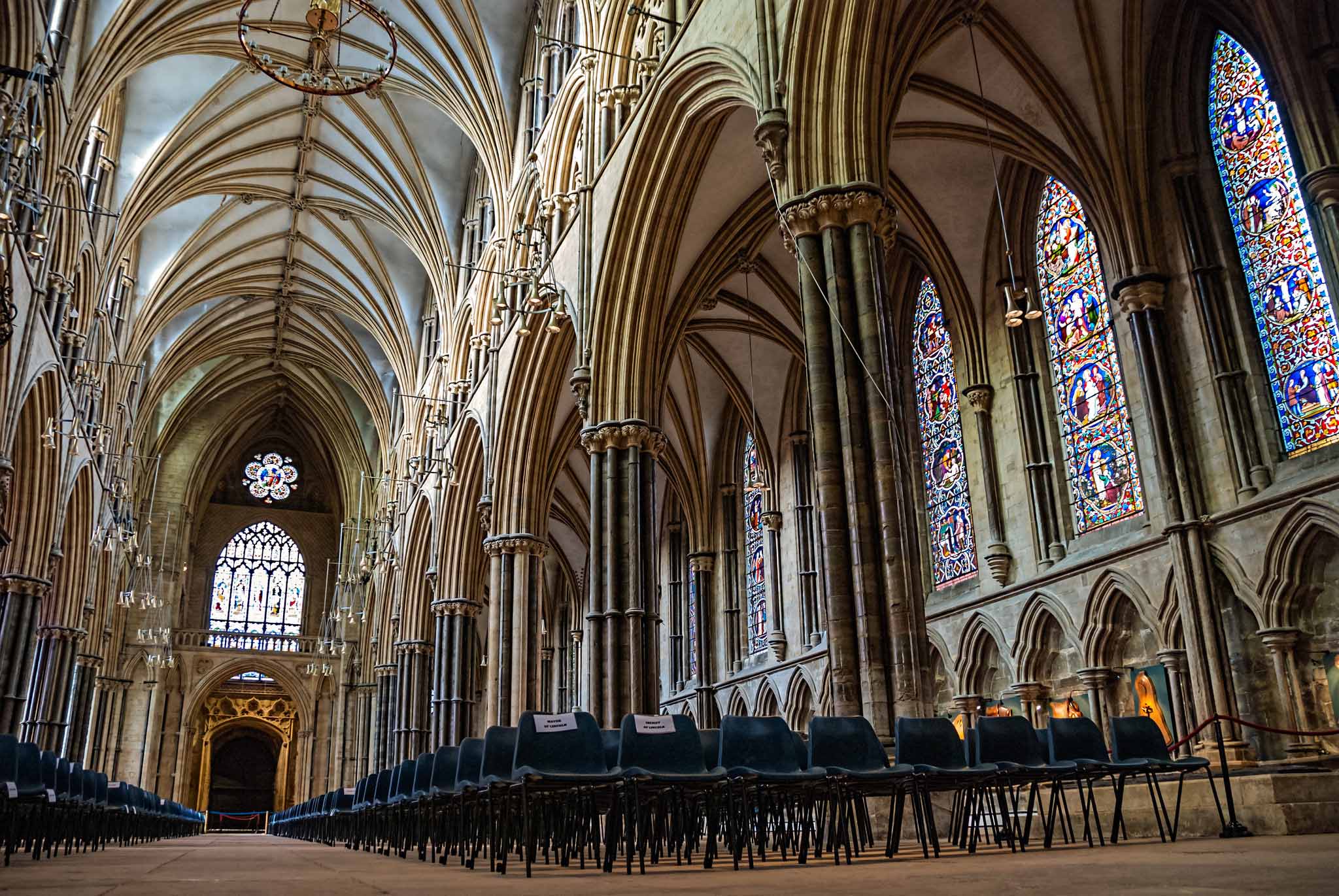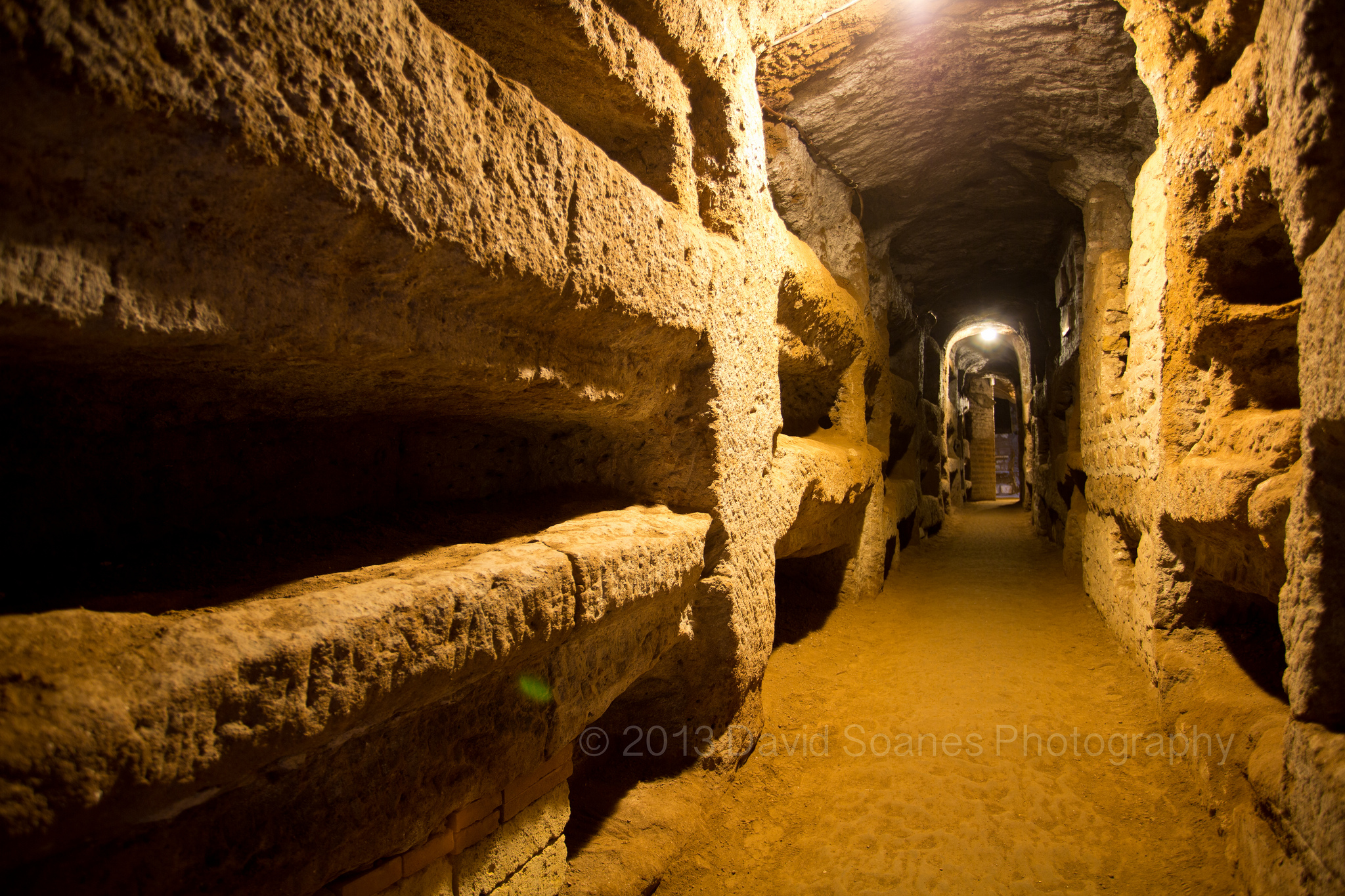© Copyright 2023, T. Stanfill Benns (All emphasis within quotes added by the author)
Introduction
The Feeneyite sect probably has been one of the most difficult to deal with and some of its more vociferous members seem to take after Feeney himself — rude, recalcitrant, anti-Semitic and unrepentant. The following quote describes them well: “[The heretics] … ‘last defense,’ St. Jerome says, ‘is to start spewing out a serpent’s venom with their tongue when they see that their causes are about to be condemned, and spring to insults when they see they are vanquished.’” (Exsurge Domine, Pope Leo X). So whatever is written here, regardless of how damning it is to their cause, will most likely be dismissed just as previous attempts have in the past. But for those of good will, genuinely seeking the truth regarding this Feeney affair, it cannot and must not be dismissed, if those reading this wish to either become or remain Catholic.
The accusation that Feeney has been calumniated by this author and others is not only untrue but is both specious and an inspiration of the devil. It is levied with the intent to divide those praying at home and divert them into the heretical Feeneyite sect by portraying Feeney as an unsung hero and Pope Pius XII as a heretic. Those who cannot see this have been blinded by the operation of error. A certain Feeneyite website has been circulating a “FACT” sheet for some time now in continuing attempts to raise Feeney to the status of a martyr, claiming that the Sacred Congregation of the Holy Office deprived him of a proper trial for failing to follow the Canons of the 1917 Code and hence his subsequent excommunication is null and void.
The implication in this infamous sheet is that this was all a part of some larger conspiracy conducted by the Holy Office itself to ecumenize the Church, a prelude and a pathway to the false Vatican 2 council. But as has been seen so many times before in the case of Traditionalists, the story is skewed to obfuscate the truth, and the inquirer is led on a merry chase through canon laws that cannot and do not even apply to the case, as will be seen below.
Obedience owed to the Sacred Congregations
1) “On August 8, 1949, a Protocol letter came from the Supreme Sacred Congregation of the Holy Office [Suprema haec sacra]. It was formally defective in that it was never published in the Acta Apostolicae Sedis (Acts of the Apostolic See). It is this register alone which confers an official and binding character on a document. And even then, only so long as it meets the proper forms.” So says a Feeneyite Traditionalist website! WHAT SAYETH THE CHURCH?
Pope Pius IX: “It is not sufficient for learned Catholics to accept and revere the aforesaid dogmas of the Church. It is also necessary to subject themselves to the decisions pertaining to doctrine which are issued by the Pontifical congregations…” (The conventions of the Theologians of Germany, DZ 1684)
Pope St. Pius X: “They are to be considered free of all blame who consider of no account the reprobation published by the Sacred Congregation of the Index or by the other sacred Roman congregations (error condemned in the decree of the Holy Office, Lamentabili; DZ 2008).
Pope St. Pius X: “We noticed that there are not lacking those who have not received and do not receive such decisions [of the Pontifical Biblical Commission] with the obedience, which is proper, even though they are approved by the Pontiff” (ASS 40 1907; DZ 2113).
The Holy Office letter Suprema haec sacra, is an act of a Roman Congregation, the Sacred Congregation of the Holy Office. According to Can. 7 of the 1917 Code: “By the term Apostolic See or Holy See, wherever it occurs in the Code, is meant not only the Roman Pontiff but also, unless the context proves the contrary, the Sacred Congregations and the Roman tribunals and offices through which the Roman Pontiff usually transacts the affairs of the universal Church” (and this is according to the reorganization of the Roman Curia by Pope St. Pius X, Sapiente consilio, entered into the Acta Apostolica Sedis). According to the Catholic Encyclopedia, “[The Sacred Congregation of the Holy Office began] as the Roman Inquisition… This congregation is of very ancient origin, dating from Innocent III (1194-1216), although some authorities attribute its establishment to Lucius III (1181-85).” It was set up in the 1500s under Pope Paul III to handle crimes brought to it for judgment: apostasy, heresy, schism and all matters touching on faith and morals. But it did not begin its existence as a congregation until 1558, in the reign of Paul IV, who tried one of his own cardinals for heresy.
Msgr. Joseph C. Fenton notes that Can. 7 qualifies Suprema haec sacra as “an act of the Holy See. All of these statements of the Church’s ordinary magisterium are authoritative… It is an instruction of the Holy Office, sent out with the approval and at the bidding of the Sovereign Pontiff himself. As such, it is an authoritative, though obviously not an infallible, document. That is to say, the teachings contained in the Suprema haec sacra are not to be accepted as infallibly true on the authority of this particular document. NEVERTHELESS, the fact remains that much of its teaching — indeed, what we may call the substance of its teaching — is material which has appeared in previous documents emanating from the Sovereign Pontiff himself and from Oecumenical Councils of the Catholic Church” (The Catholic Church and Salvation in the Light of Recent Pronouncements by the Holy See, 1958).
The Catholic Encyclopedia writes under Congregations: “Even when specifically approved by the pope, decrees of the Holy Office are not infallible. [However] THEY CALL FOR A TRUE ASSENT, INTERNAL AND SINCERE, but they do not impose an absolute assent, like the dogmatic definitions given by the pope as infallible teacher of the Faith. The reason is that, although an act of this congregation, when approved by the pope specifically, becomes an act of the sovereign pontiff, that act is not necessarily clothed with the infallible authority inherent in the Holy See, since the pope is free to make the act of an inferior his own without applying his pontifical prerogative to its performance… The disciplinary Decrees of the Holy Office have the same force as those of the other congregations, that is, they are binding upon all the faithful if they be formally universal.”
So it is clear here that these decisions of the Holy Office are binding, at least unless or until re-examined by a future canonically elected Roman Pontiff. And they are binding specifically because they are based on dogmatic definitions previously taught, which demand a firm and irrevocable assent, an absolute assent. And as will be demonstrated later, Feeney’s actual excommunication must be accepted by all as well.
Rev. Edward L. Heston C.S.C, PhD., S.T.D., J.C.D, who served with the Sacred Congregation of the Sacraments, tells us in his The Holy See at Work (1951): “But because of the unusually delicate nature of the matter submitted to its jurisdiction, all the proceedings of the Holy Office are carried on in strictest secrecy. The secret of the Holy Office implies the strictest degree of secrecy existing in the Roman Curia. Violation of it entails automatic excommunication reserved so exclusively to the Sovereign Pontiff that only he himself can absolve from it.” Some of the decisions decided by Popes Pius XI and Pius XII from the Holy Office were the condemnation of Action L’Francais, Pius XI’s denunciation of Nazism, and Pius XII’s instruction on atheistic Communism, among other things. But not all papal documents are entered into the Acta Apostolica Sedis, nor are they required to be so entered. Yet for other reasons, as Msgr. Fenton explains, Suprema haec sacra is yet an authoritative document and is binding because it is grounded on previous infallible teaching.
Canons not included in Feeneyite “Facts”
The Fact Sheet alleges that because there was never any canonical trial by a court concerning this case “as proscribed by the disciplinary canons and decrees of the Council of Trent,” certain canons were violated; therefore Fr. Feeney was justified in contesting his excommunication in 1953 as null and void. Earth to the Feeneyites: much has changed since the Council of Trent concluded in the 1500s. The following canons are mentioned in the Feeneyite “Fact sheet”: 1680,1715,1723,1842, 1843,1959 and 2225. All have to do with the accused’s right to a fair hearing and to present evidence under penalty of nullity. While these canons apply to all the other Sacred Congregations, they do not apply to the Holy Office, and those canons directly relating to the Holy Office appear nowhere in this fact sheet. Therefore, all the canons just mentioned can be disregarded in light of the following:
Can. 247: “The Congregation of the Holy Office of which the Supreme Pontiff is the prefect, guards the doctrine of faith and morals… It is its task to investigate ex officio in the best available manner the censurable writings of any kind which are published and to remind the ordinaries of their duty to proceed conscientiously against pernicious writings and to denounce them to the Holy See.”
Can. 1555: “THE TRIBUNAL OF THE CONGREGATION OF THE HOLY OFFICE PROCEEDS ACCORDING TO ITS OWN LAWS AND CUSTOMS and also the inferior tribunals must follow the norms given by the Holy Office in matters pertaining to the tribunal of that Sacred Congregation.”
Can. 1703: “In the prosecution of offenses which are reserved to the judgment of the Sacred Congregation of the Holy Office (e.g., heresy, solicitation, absolution of one’s accomplice in sins of impurity) the ordinary time limits for prosecution do not apply; THE HOLY OFFICE FOLLOWS ITS OWN RULES. This is explained further below.
“Following the reorganization of Pius X, the renewed Congregation of the Holy Office maintained its first place among the various Roman congregations, and subsequently had the word “Supreme” added to its title because its President was the Pope himself. Its jurisdictional competence remained the defense of the doctrine of the faith and morals, processes against heresy, as well as other offenses that created a suspicion of heresy… Benedict XV addressed the specific responsibilities of the Holy Office, decreeing in his motu proprio Alloquentes of 25 March 1917 the suppression of the Congregation of the Index as an autonomous office and its reintegration into the Holy Office… Paul VI himself anticipated the reorganization of the most prestigious and debated office of the Roman Curia, the Supreme Sacred Congregation of the Holy Office, and issued the motu proprio Integrae servandae on 7 December 1965, on the very eve of the Council’s conclusion…
“The recognition of the right to a defense of any “accused” author was one of the most important innovations introduced by the motu proprio Integrae servandae. This document aimed at addressing one of the major criticisms made about the Holy Office: the impossibility for an author to defend his work when it was being examined by the Congregation with the intent of putting it on the Index…” Paul 6 wrote in this document:
“5. It carefully examines books that have been reported and, if necessary, condemns them, after, however, having heard the author, to whom is given the faculty to defend himself, also in writing, and not without having notified the Ordinary, as was already established in the Constitution Sollicita ac Provida by Our Predecessor of happy memory Benedict XIV.” https://www.vatican.va/roman_curia/congregations/cfaith/storia/documents/rc_con_cfaith_storia_20150319_promuovere-custodire-fede_en.html#PERSONNEL,_OFFICES,_PROCEDURES_
Feeney never had any “right” to defend himself. Heresy, apostasy and schism in a prominent cleric is considered the most grievous of crimes and is dealt with severely in order to guard the faithful from contagion and loss of the faith. The Holy Father is above the law, in the sense that he is the only one who can dispense from the canons and make exceptions or changes to them in such cases.
The Holy Office followed the Canons to the letter
(From the Canon Law Digest, Vol. 3)
The Priest Leonard Feeney is Declared Excommunicated
“Since the priest Leonard Feeney, a resident of Boston (Saint Benedict Center), who for a long time has been suspended a divinis for grave disobedience towards Church authority, has not, despite repeated warnings and threats of incurring excommunication ipso facto, come to his senses, the Most Eminent and Reverend Fathers, charged with safeguarding matters of faith and morals, have, in a Plenary Session held on Wednesday 4 February 1953, declared him excommunicated with all the effects of the law.
On Thursday, 12 February 1953, our most Holy Lord Pius XII, by Divine Providence Pope, approved and confirmed the decree of the Most Eminent Fathers, and ordered that it be made a matter of public law.”
Given at Rome, at the headquarters of the Holy Office, 13 February 1953
Marius Crovini, Notary
(AAS, February 16, 1953; Volume XXXXV, Page 100)
The Sacred Canons WERE followed when it comes to this excommunication for heresy. Feeney was SUSPENDED for grave disobedience, not (initially) excommunicated for it. Notice the Holy See states that this suspension had been in effect “for a long time,” indicating a chance for him to repent, which he never did. The excommunication was issued to “safeguard(ing) matters of faith and morals,” indicating that Feeney was excommunicated for denying some statement contrary to Divine faith, which is heresy. That heresy most likely was the denial of the following from Pope Boniface VIII and other sources: “Therefore, no one will be saved who, knowing the Church to have been divinely established by Christ, nevertheless refuses to submit to the Church or withholds obedience from the Roman Pontiff, the Vicar of Christ on earth.”
This act of heresy also is indicated by the mention of ipso facto excommunication, which is attached to Canons 188 §4 and 2314. Canon 2315 states that those who after admonition have not removed the cause shall be considered suspect of heresy. After repeated admonitions they shall be suspended a divinis, which was the case with Feeney. Whoever refuses to repent WITHIN SIX MONTHS after suspension and repeated admonitions “shall be considered as a heretic and liable to the penalties for heresy.” Clearly Feeney was being punished under Can. 2315. Pope Pius XII waited four years, so this was more than fair. Of course Feeneyites contest the validity of Canon Law so would not be aware of this, most conveniently. Can. 2315’s parent law is taken from Pope Leo X’s Constitution, Exsurge Domine, written in 1520. Below we see that Feeney’s excommunication was formal.
One of Feeney supporters’ chief complaints is that Suprema haec sacra was never entered into the Acta Apostolic Sedis. But this excommunication was so entered, and even though they whine that it had no official seal, evidence to prove this has not been produced; nor has it been proven that without such a seal it was somehow not valid, since it does duly appear in the Acta.
Feeney exposed as a Vatican 2 heretic
The Feeney Fact Sheet further states: “In 1972 Fr. Feeney was supposedly “reconciled” to the Church. If Fr. Feeney truly needed to be reconciled, he would have had to recant his position. Yet he was never asked to do that. Anyone who is truly excommunicated for heresy must withdraw what they once held and proclaim belief in orthodoxy. But Father Feeney was never asked to take back or repent from his teaching on “Outside the Catholic Church there is no salvation.” Why not? Because those of the Archdiocesan establishment who arranged for the reconciliation knew the facts of the case and that Father Feeney was not excommunicated for heresy, but for disciplinary reasons.”
So in the statement above, the Fact Sheet author appears to accept Feeney’s reconciliation as valid despite the fact that Feeney was not received back into the church from which he originally departed, but into a non-Catholic parody of that Church. Feeneyites have long claimed that the Holy Office excommunication of Feeney was not for heresy or schism, but for disobedience or other such reasons, in addition to falsely asserting it was null and void because levied contrary to the canons. And in the end, some of Feeney’s defenders even act asthoughthe recinciliation was done against Feeney’s will, or somehow without his full consent, which is contradicted by public reports.
Several publications available on the Internet confirm Feeney’s reconciliation, which could never have taken place without his cooperation. “Fr. Feeney’s reconciliation with the Church came about least in part through … the efforts of Bishop Bernard J. Flanagan of Worcester, Cardinal Humberto Medeiros of Boston, and Cardinal John Wright of the Congregation for the Clergy,” (stated in three separate NO news reports). In an article published in America magazine on Feb. 25, 1978, shortly after Feeney’s death, Avery Dulles S.J. wrote: “St. Benedict Center, after it moved to Still River, Mass., in January 1958, became a different kind of community, more in keeping with the Benedictine spirit to which Father Feeney himself had long been attracted. Thus it became possible for the major portion of the community, including Father Feeney himself, to be reconciled to the Catholic Church in 1974.”
Feeney recognized as true and became an official member of a non-Catholic sect; and he never recanted his previous heresy. And by doing so, he incurred the censures for communicatio in sacris found in Can. 2314 §3 and Can. 1258 for heresy and schism. Pope Pius IX also taught in Quartus Supra (1873), written to the Armenians:
“For the Catholic Church has always regarded as schismatic those who obstinately oppose the lawful prelates of the Church and in particular, the chief shepherd of all. Schismatics avoid carrying out their orders and even deny their very rank.”
And again in Quae in patriarchatu (1876): “In fact, Venerable Brothers and beloved Sons, it is a question of recognizing the power (of this See), even over your churches, not merely in what pertains to faith, but also in what concerns DISCIPLINE. He who would deny this is a heretic; he who recognizes this and obstinately refuses to obey is worthy of anathema,” (September 1, 1876, to the clergy and faithful of the Chaldean Rite.)
This “reconciliation” of Feeney’s is the best laugh ever — let me try to unravel this one. A condemned heretic who pretends to defend orthodoxy appeals to the ecumenists for pardon, after his mission to discredit Pope Pius XII and the Holy Office is accomplished? Now we see what Feeney, whose bogus claims of mistreatment and modus operandi mirrored Marcel Lefebvre’s in so many ways, was really up to: attack the papacy, accuse Pius XII of favoring ecumenical beliefs, prepare the groundwork for a total renunciation of papal authority, (as Pope St. Pius X warned the Modernists were doing in Pascendi dominici gregis), seduce the faithful, confuse the faithful, and, if any doubt ever existed, confirm his heresy all over again by joining the Vatican 2 sect!! Is there any more we can say about this madness that passes for an unassailable orthodoxy? And WE are accused of siding with the ecumenists?!
Heresies embraced by those professing Feeneyism
Below are enumerated the heresies that Feeneyites and anyone believing them profess, heresies that extend not only to Baptism and the nature of grace and how it is received, but to the Church’s teachings on the Sacrament of Penance, the Holy Eucharist and Church membership:
1) They deny the nature and state of grace as defined by the Church:
- In his dogmatic Bull Unigenitus, Clement XI in 1713 condemned the proposition by the Jansenist Quesnel which falsely stated that: ‘Outside the Church, no grace is granted,’ (DZ 1379).
- In 1690, Alexander VIII had already condemned the Jansenistic proposition of Arnauld that “Pagans, Jews, heretics, and other people of the sort, receive no influx [of grace] whatsoever from Jesus Christ,” (DZ 1295).
2) They deny the Church’s teaching on the Perfect Act of Contrition and membership in the Church:
“In the merciful designs of God’s providence, such realities as the Church itself and the sacraments of baptism and penance can, under certain circumstances, bring about the effects which they are meant to produce as means necessary for the attainment of eternal salvation when a man possesses them only in the sense that he desires or intends or wills to have or to use them. Obviously, the text cannot be understood unless we realize what the “certain circumstances” mentioned in the text really are.
“Basic among these circumstances is the genuine impossibility of receiving the sacraments of baptism or of penance or of entering the Church as a member. It is quite clear that if it is possible for a man to be baptized, to go to confession and to receive sacramental absolution, or really to become a member of the true Church, the man for whom this is possible will not attain to eternal salvation unless he actually avails himself of these means. But, on the other hand, should the actual employment of these means be genuinely impossible, then the man can attain to eternal life by a will or desire to employ them” (THE CATHOLIC CHURCH AND SALVATION in the Light of Recent Pronouncements by the Holy See, Msgr. Joseph C. Fenton, 1958).
- Also Fr. Henry Semple, S. J., in his Heaven Open to Souls, refers to the rigorist doctrine denying remission of sin by a Perfect Act of Contrition as a Jansenist error. The scriptural teaching contrary to this error can be found in Jonas, Ch. 3. First Semple cites the anathema from the Council of Trent against those denying the efficacy of the Perfect Act of Contrition from Session 14, Ch. 4, Can. 5, (DZ 898, 915). “That this contrition is perfect because of charity and reconciles man to God, before this sacrament [Penance] is actually received, this reconciliation nevertheless must not be ascribed to the contrition itself without the desire of the sacrament included in it,” and this is duly stated in the Perfect Act of Contrition itself. Semple then remarks on p. 155: “Each one of the leaders of the Jansenists taught errors identical, or almost identical with these, and were duly condemned by the Holy See,” as shown above.
- As Rev. Francis Connell, C.S.S.R. stated, “I strongly recommend that priests frequently instruct their people in the sound principles of Catholic theology concerning the efficacy of perfect contrition and the manner of making a perfect act of contrition…An act of perfect contrition will take away mortal sin at any time and not merely in a crisis… It is not difficult to make an act of perfect contrition for one who firmly believes all the doctrines of the Catholic faith. One who seeks pardon of mortal sins through perfect contrition must have the intention of confessing that sin the next time he receives the Sacrament of Penance — not necessarily as soon as possible,” (emph. his) “In the meantime he may not receive Holy Communion but is in the state of grace, so that if he died suddenly, he would be saved.”
- The same would apply to Spiritual Communion, which is all that we have when unable to receive the Holy Eucharist from true priests. For it would deprive Catholics of obtaining the actual graces because they are not receiving the Sacrament itself, just as Feeneyites falsely claim is necessary in the case of Baptism.
3) They deny the ability of baptized Catholics — who are unable to be absolved and abjured of the heresies they incurred when attending Novus Ordo and/or Traditionalist services — to once again become members of the Church as Canon Law provides. (See article here.) This because since there could be no official confessional absolution from the mortal sin of heresy by a true priest — which is a sacramental act — nor the additionally required abjuration from a validly ordained and consecrated priest or bishop with the necessary jurisdiction from the Roman Pontiff, the sin of heresy or schism could not be forgiven.
4) They deny the infallibility of the encyclical Mystici Corporis Christi regarding the nature of the Mystical Body as applying to the entire Communion of Saints, from Adam and Eve until now. For they would exclude for lack of water Baptism the Old Testament prophets and patriarchs along with their faithful, the Holy Innocents, and saints such as St. Anne, St. Joachim, St. Simeon, St. Joseph and others, who could not have been baptized before Christ began His earthly mission. This topic has been addressed at length by Msgr. J.C. Fenton, who demonstrates it was the teaching of scholastics long before Mystici Corporis was issued:
“One of the earliest mentions of the formula communio sanctorum or communion of Saints with reference to a creed is found in the Explanatio symboli attributed to Nicetas of Remesiana, written around the beginning of the 5th century: “After the profession of the Blessed Trinity, you profess that you believe in the holy Catholic Church. But what else is the Church but the congregation of all the Saints? For from the beginning of the world the patriarchs Abraham, Isaac and Jacob, the prophets, the apostles, the martyrs and the rest of the just, who have been, who are and who will be, constitute one Church because sanctioned in one faith and manner of life. And signed with one spirit, they are made into one body, of which body Christ is the Head, as we have been taught and as it is written.” (The Extension of the Mystical Body, AER, Jan.,1944).
We believe in the Communion of Saints, as we profess in the Creed. And we know that the Communion of Saints is part of Christ’s Mystical Body, the Church, which is composed of the Church on Earth, the Church Suffering and the Church in Heaven. How, then, could water Baptism alone make one a member if in professing our faith, the Church tells us we must believe in members of that Communion, saints, who were never baptized? The Creeds are nearly as old as the Church Herself; the Patriarchs, St. Joseph, St. Anne and Joachim, the Good Thief, all have been considered in heaven for centuries. They could not possibly be in error. No; it is Feeney who is in error.
5) Contrary to Canon Law (Can.1556) and the teaching of Pope Innocent III, they dare to question and judge the decisions of the Roman Pontiff, painting Pope Pius XII as a heretic. And yet we know that no pope could ever teach heresy from the Chair of Peter unless his election was somehow proven to have been invalid, because the Vatican Council infallibly declared that Peter’s faith can never fail. Canon 2233 states: “No penalty can be inflicted unless it is proved with certainty that the offense has been committed and that prosecution is not barred by a legitimate prescription.”
The decades-old proofs of Roncalli’s and Montini’s pre-election heresy are manifest and easily demonstrated. Contrary to the accusations of our critics, we have never judged the Vatican 2 usurpers as popes, only John 23 as invalidly elected and hence his successors as usurpers under Canon Law. We have gone to great lengths to research these proofs and to avoid even the appearance of questioning the authority of canonically elected popes. But Where are THEIR proofs?
From Suprema haec sacra, issued against Leonard Feeney and
St. Benedict’s Center, Aug. 8, 1949:
“We are bound by divine and Catholic faith to believe all those things which are contained in the word of God, whether it be Scripture or Tradition, and are proposed by the Church to be believed as divinely revealed, not only through solemn judgment but also through the ordinary and universal teaching office,” (DZ (Denzinger) 1792; Oath against Modernism DZ 2145). “NOW, AMONG THOSE THINGS WHICH THE CHURCH HAS ALWAYS PREACHED AND WILL NEVER CEASE TO PREACH IS CONTAINED ALSO THAT INFALLIBLE STATEMENT BY WHICH WE ARE TAUGHT THAT THERE IS NO SALVATION OUTSIDE THE CHURCH. However, this dogma must be understood in that sense in which the Church herself understands it.
“For, it was not to private judgments that Our Saviour gave for explanation those things that are contained in the deposit of faith, but to the teaching authority of the Church… Therefore, let them who in grave peril are ranged against the Church seriously bear in mind that after “Rome has spoken” they cannot be excused even by reasons of good faith. Certainly, their bond and duty of obedience toward the Church is much graver than that of those who as yet are related to the Church ‘only by an unconscious desire’… Submission to the Catholic Church and to the Sovereign Pontiff is required as necessary for salvation,” (as defined in Boniface VIII’s, (Unam Sanctam).
The final decree of excommunication may not have been specifically levied for holding heresy per se concerning “outside the Church” or baptism of desire, but as can be seen from the two documents above, it definitely WAS handed down for denying the supreme authority of the Roman Pontiff. This IS heresy, and Feeney incurred the censures for this as the above documents indicate. As Suprema haec sacra states, he insisted on and persisted in teaching the dogma “outside the Church there is no salvation” in a manner contrary to that taught by the Catholic Church as having been revealed by Jesus Christ. May all who have been tempted to believe these deluded Feeneyites be warned: If you have any regard whatsoever for the soul entrusted to you by Christ, a heretic avoid.





